Bison hunters
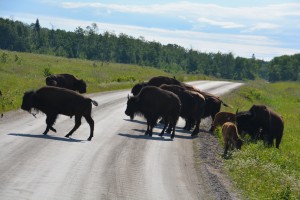
Whose road is this? A herd of plains bison slowly amble across our road – and we’re happy to watch them pass
We found the herd of bison grazing in a large open meadow some distance from where we were standing. We watched them for a while and noticed they were slowly drifting towards a nearby dirt track. We positioned Tramp to intercept them and then quietly watched as they slowly moved across in front of us, one of them interested enough to come over and almost sniff Tramp. They were losing their winter coats and the cows were nursing little rusty-coloured calves. We had them all to ourselves and spent over an hour with these original inhabitants of this area. Bison hunting in Manitoba, what a hoot!
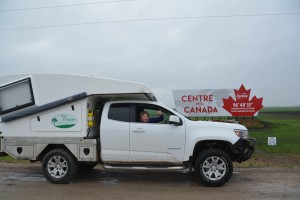
We passed the marker identifying the Centre of Canada – and of course we had to stop to celebrate the moment
We’ve designed our trip to visit as many national parks, scenic coastlines and remote places as possible. We’ll leave the big cities and crowded attractions for another trip. And true to plan, we have spent the last month from the Atlantic Ocean through to now mainly driving through thick boreal forests with stunningly beautiful mountain lakes and fast flowing snow-melt rivers. It has been a real treat to see so much natural untouched land. Imagine our surprise – nay, shock – when we crossed into Manitoba and the land opened up into endless flat fertile terrain as far as the eye could see, all of it covered in healthy fields of long grain and grasses.
It took us a little time to adjust, the roads were wide and straight, the scenery completely different and somewhat tiring, monster tractors doing their thing, farms with clusters of silos sprouting up like huge silver bullets, hardworking people going about their business. And we had a new colour to our travels – long boundless fields of flowering canola, their yellow flowers forming a bright blanket across the rolling fields. Great stuff.
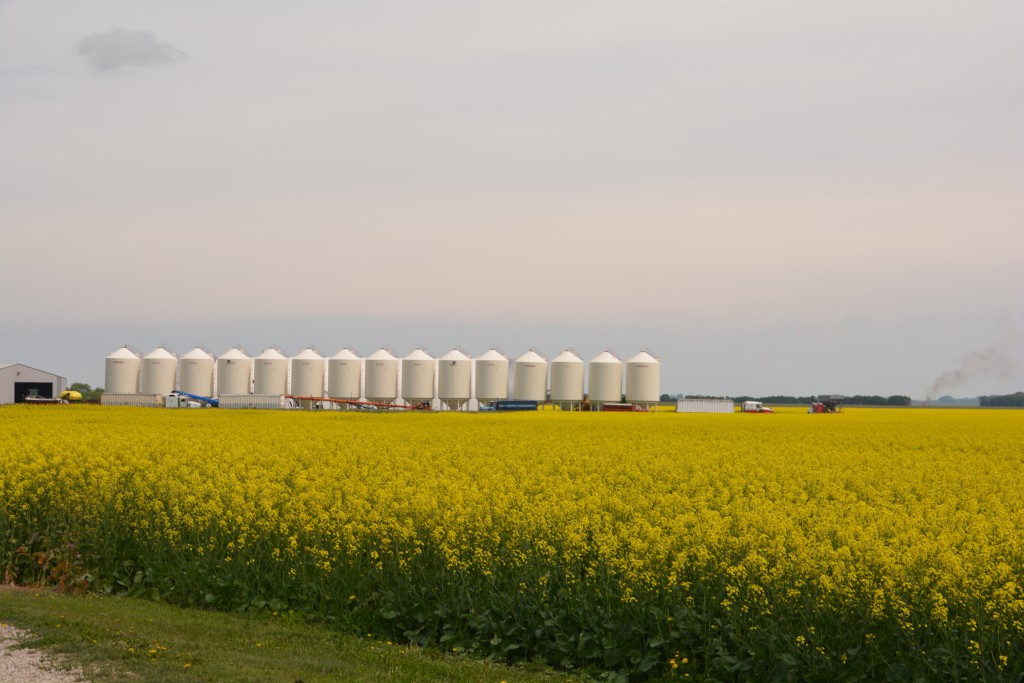
And silos! We saw old ones, new ones, on their own or in bunches, tall, short, white, silver, silos everywhere
We bypassed Winnipeg, the only large town in Manitoba, and headed north to the province’s popular national park, Riding Mountain. Riding Mountain National Park rises from the flat agricultural plains to feature rich forests, mountain lakes and creeks plus a herd of free-ish roaming bison that live in a huge protected enclosure near the remote area around Lake Audy.
We drove through the park and checked out some of the sights before following a long dirt road and eventually finding the bison herd in the late afternoon grazing on tall grass near a lake. It was great fun to watch these huge beasts with their massive heads and small behinds, baby calves more orangey than black, enjoying the warm afternoon sun. We camped that night on the banks of Lake Audy, only a few kilometres from the foraging bison, a really special place. The night was warm and still, the stunning red and orange sunset over the lake lasted almost up to 11pm, we couldn’t get enough of it.
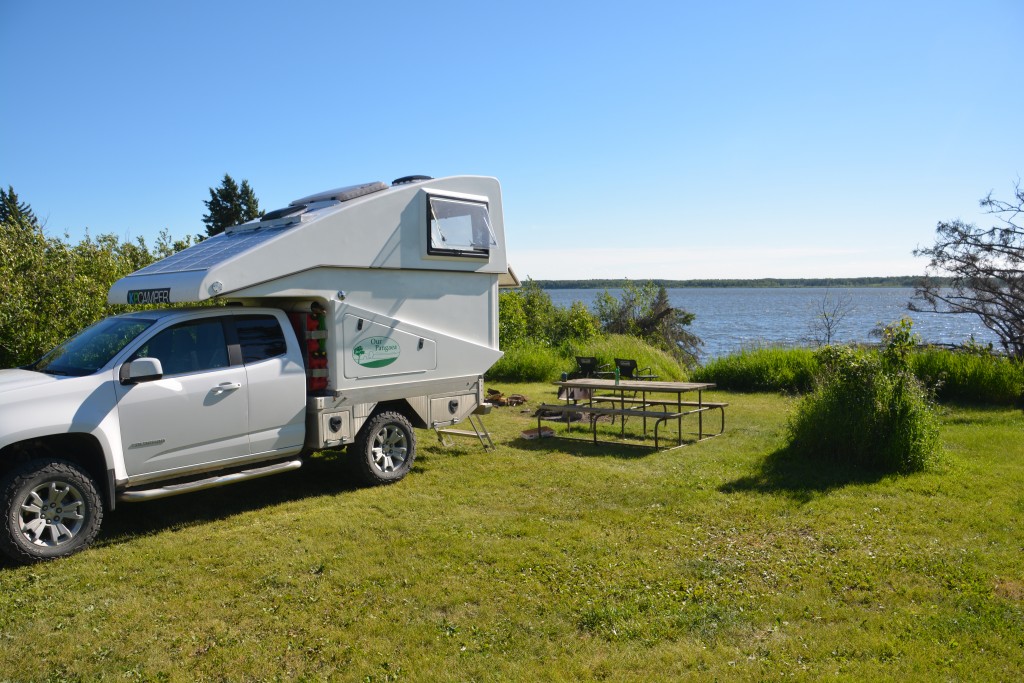
What a spot we had on the banks of Lake Audy! And what a beautiful warm still night we enjoyed, just loving it
The next morning we rose to a perfectly still lake, flat and shiny like a mirror, pelicans gracefully flying just inches above its surface. But we were on a bison hunt and headed out to see if we could find the herd again. This is when we found them grazing in a huge open space and eventually positioned Tramp so that they cross right in front of us. It was like game viewing in Africa or India and we had this herd of 32 bison all to ourselves.
The rain came hard as we left the park and we made our way up to the serviceable town of Dauphin where Tramp enjoyed an overdue oil change. From there it was due north again, working our way through rolling land sporadically covered in thick green trees and other times blanketed in early summer crops. We could see up to three different storms on the various horizons and sometimes were forced to drive through one of them before popping through to drier road on the other side. By late afternoon we had made the spacious Swan Valley where grain and grass crops reign supreme and we camped in the nearby Porcupine Forest.
But we know by now these provinces are big, very big, and we kept travelling north with a plan to cross into Saskatchewan, the province to the west, at the northern-most boundary. The road was mostly straight and a bit tedious but we passed through towns with interesting names like Overflowing River, Sturgeon Landing, The Pas, Cranberry Portage and Flin Flon.
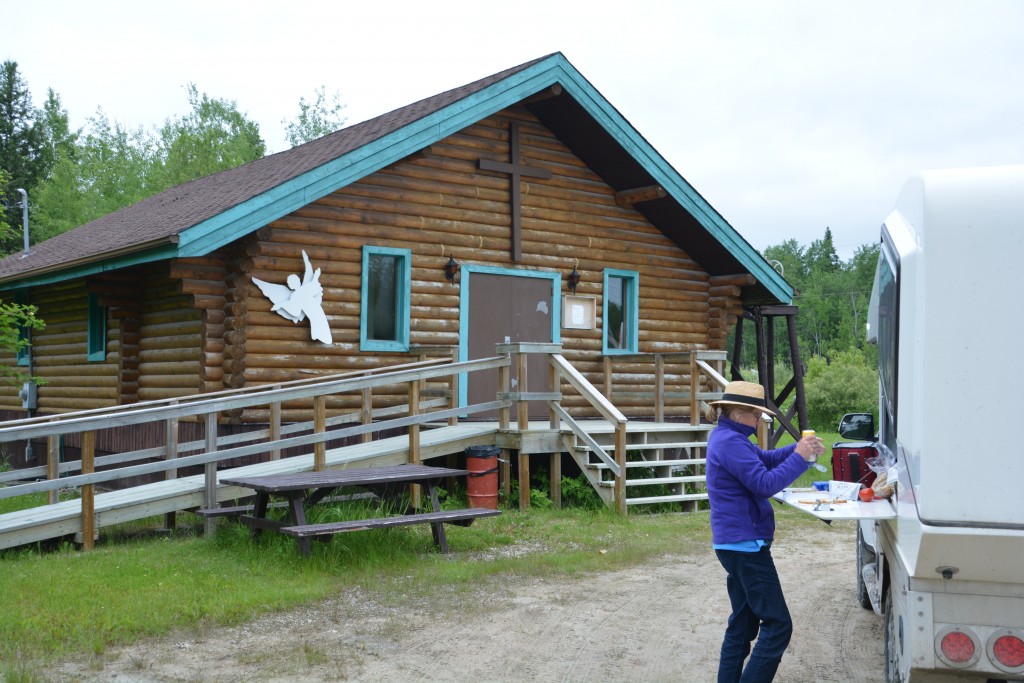
A lunch stop in front of a small town’s community church – unfortunately completely overtaken by hordes of nasty biting black flies
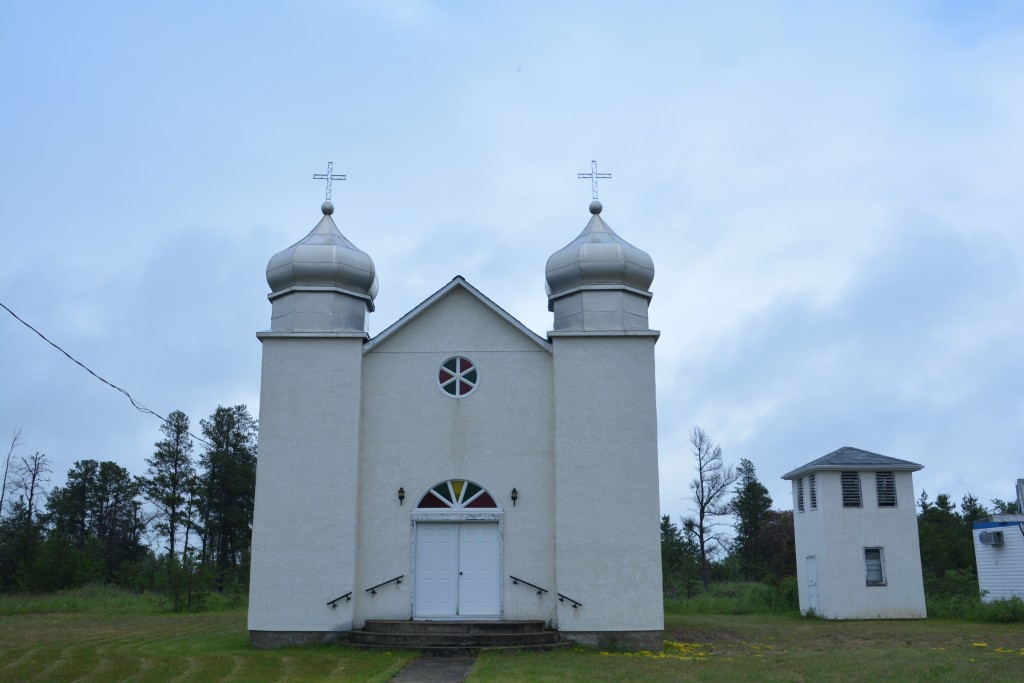
Ukrainian immigrants played a huge part in turning Canada’s central region into viable agricultural land and their churches are seen in many communities
We briefly visited Clearwater Provincial Park and took a short walk along its shores, more to clear our heads and stretch our legs than to see the stormy lake. At Cranberry Portage we stopped to read the historical plaque and appreciate the ancient Indian tribes, trappers and pioneers who would portage their canoes and worldly belongings three kilometres to cross between the Manitoba water system and the Saskatchewan water system.
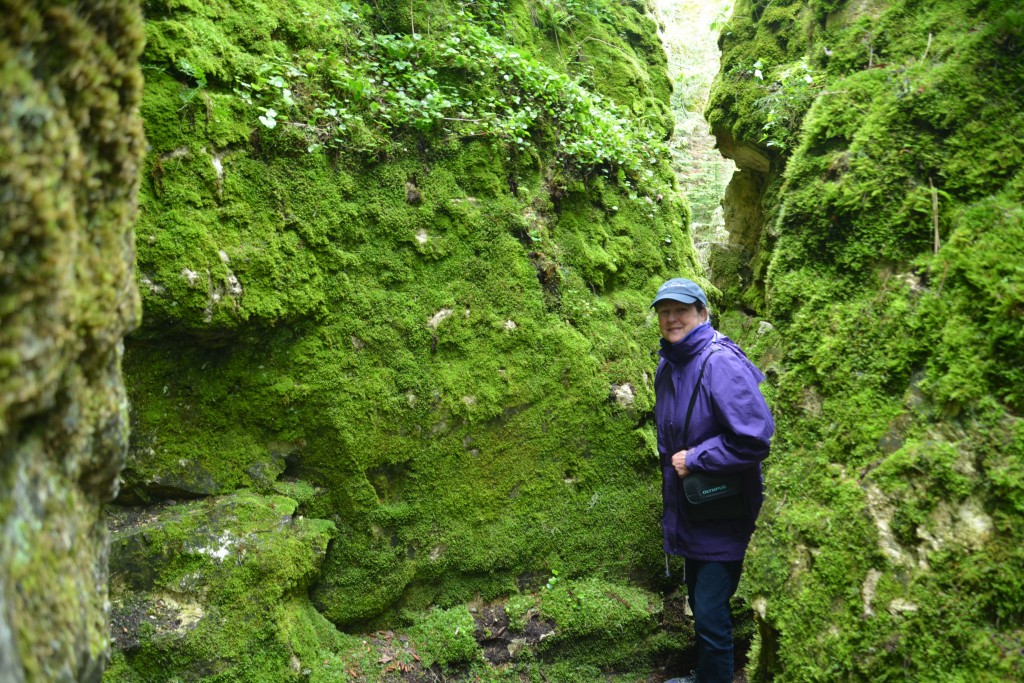
Our short walk in Clearwater Provincial Park saw us weaving our way through narrow moss-covered crevasses in the rock
In Flin Flon, an odd name if ever we’ve hit one, we enjoyed the Main Street festival and market stalls as the local Canadians begin to celebrate their big Canada Day celebration weekend. This is a milestone moment as it commemorates Canada’s 150 years of independence. Flin Flon also marked our highest northerly point on this trip so far, 54.7 degrees north Latitude but we knew there is much more to come later in the trip.
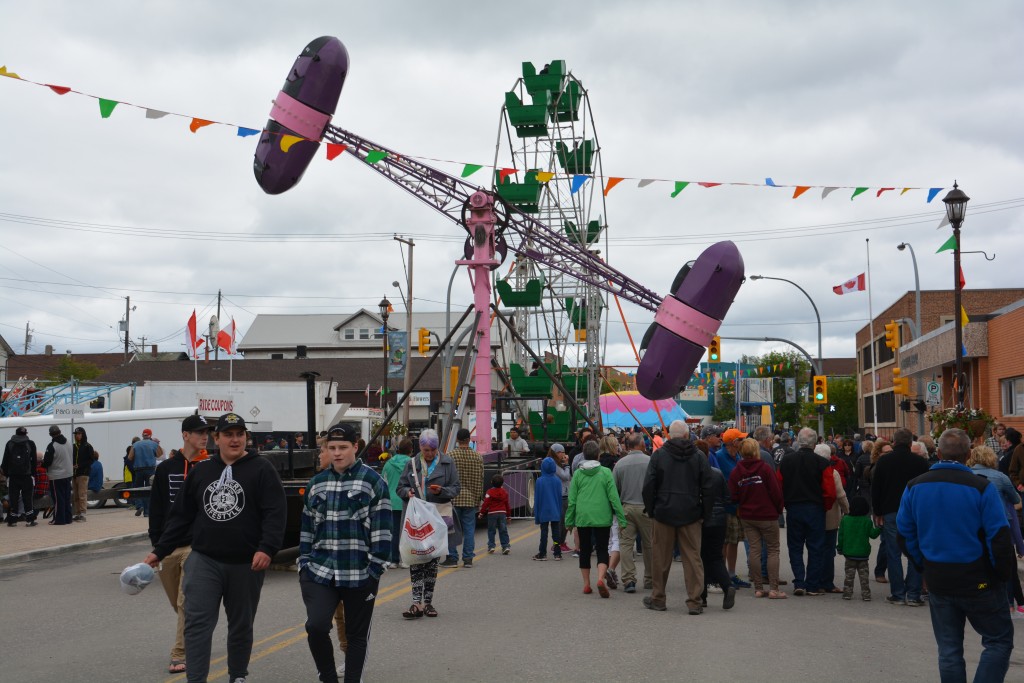
Canada Day celebrations in Flin Flon included a market and fair on main street of this small northern town
We’re travelling at a quickened pace to reach Edmonton in time to catch our flights to our nephew’s wedding so we definitely didn’t give Manitoba it’s fair due. It was another province where our best friends were Military Deet and the noxious smell of mosquito coils. What we saw was flat agricultural plains to the south and endless boreal forests to the north, dotted with thousands of lakes. We won’t mention our run-in with the Manitoba police but our highlight moment was unquestionably the time we spent with the herd of bison, something really special.
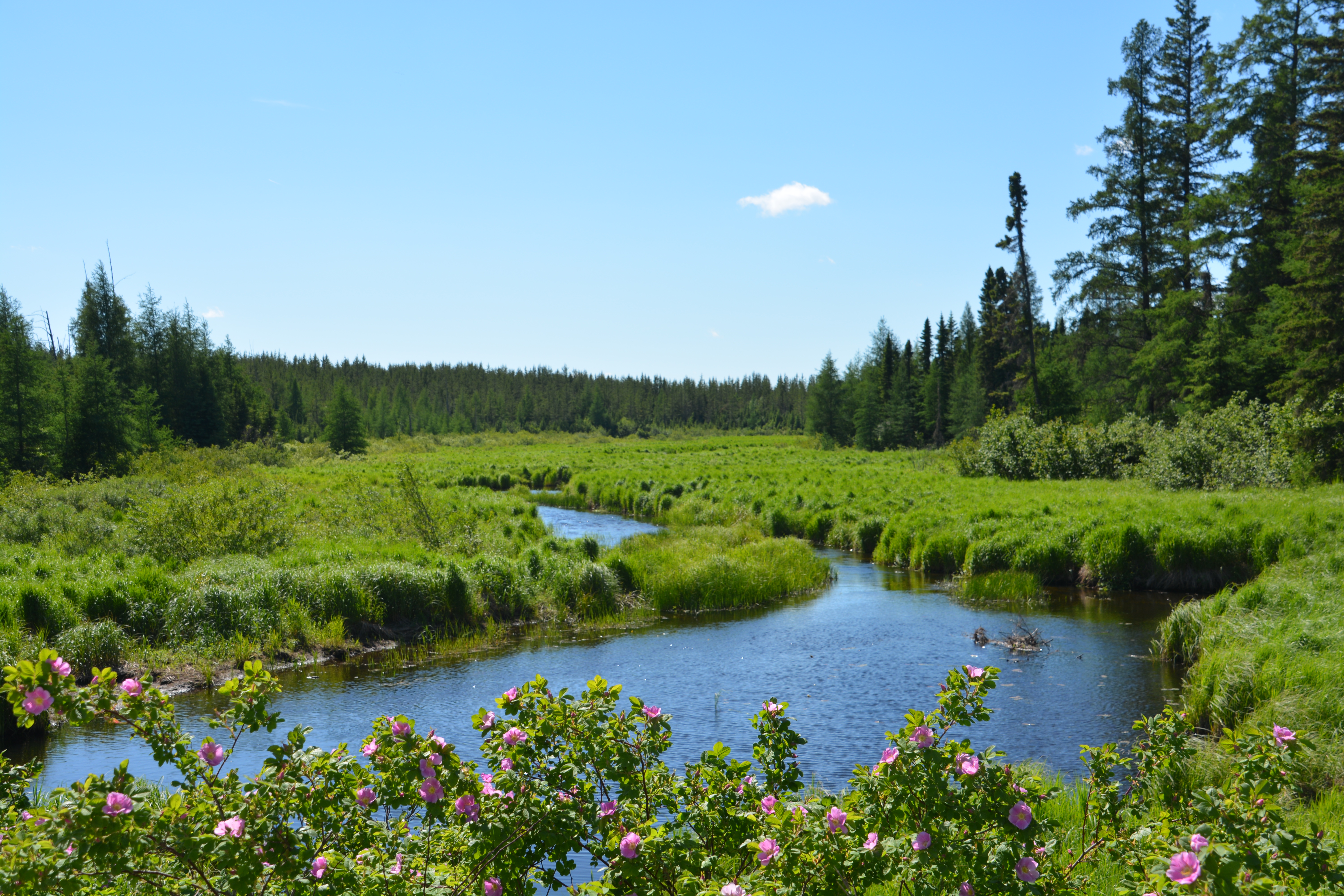
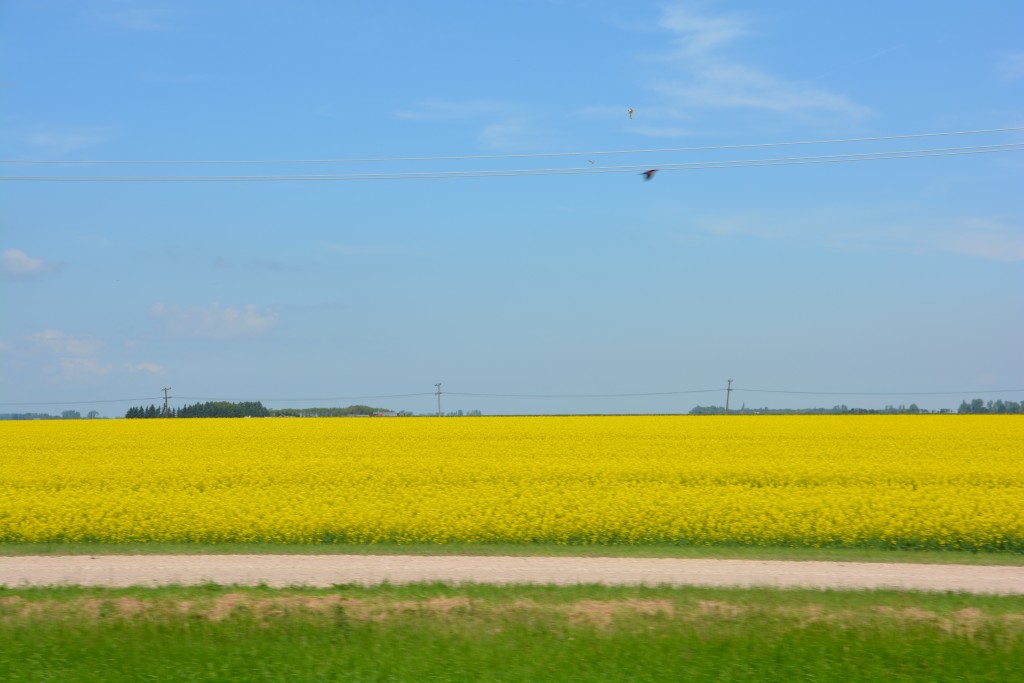
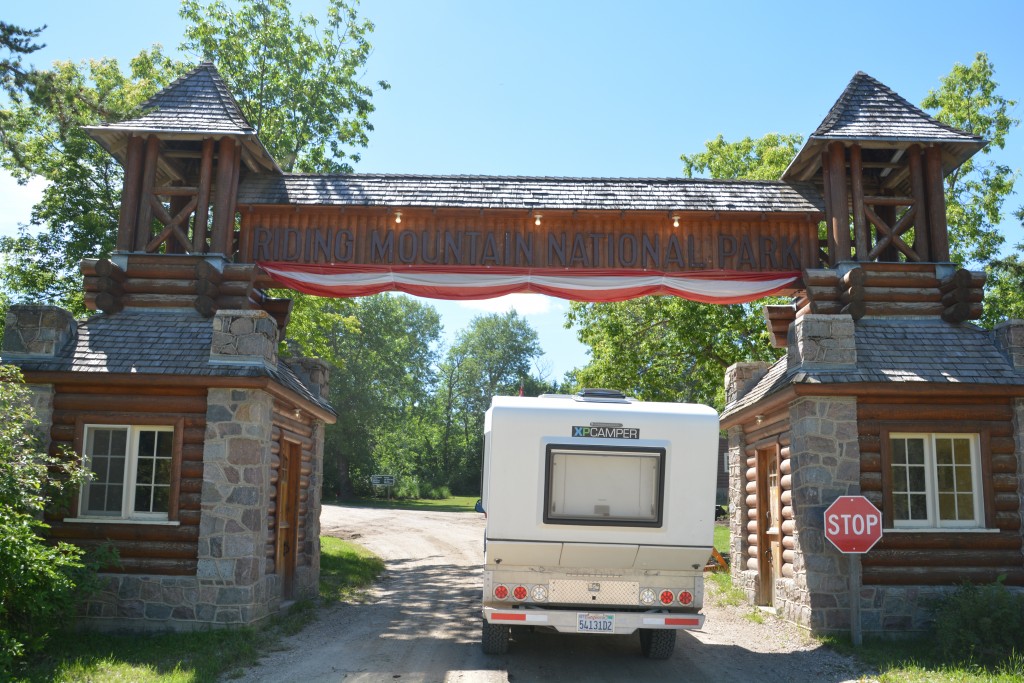
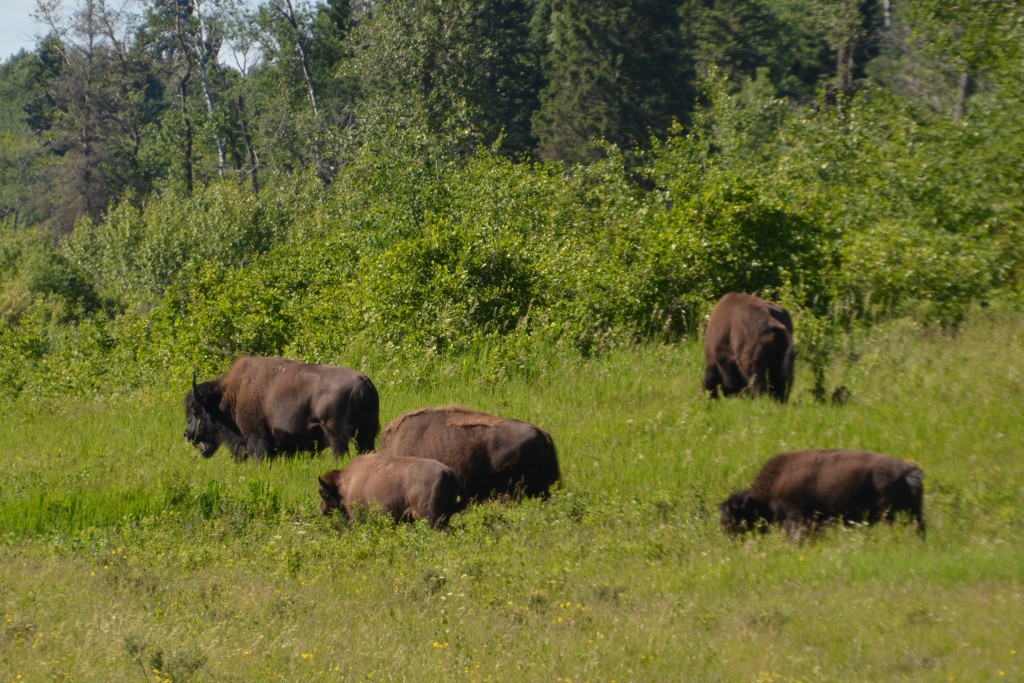
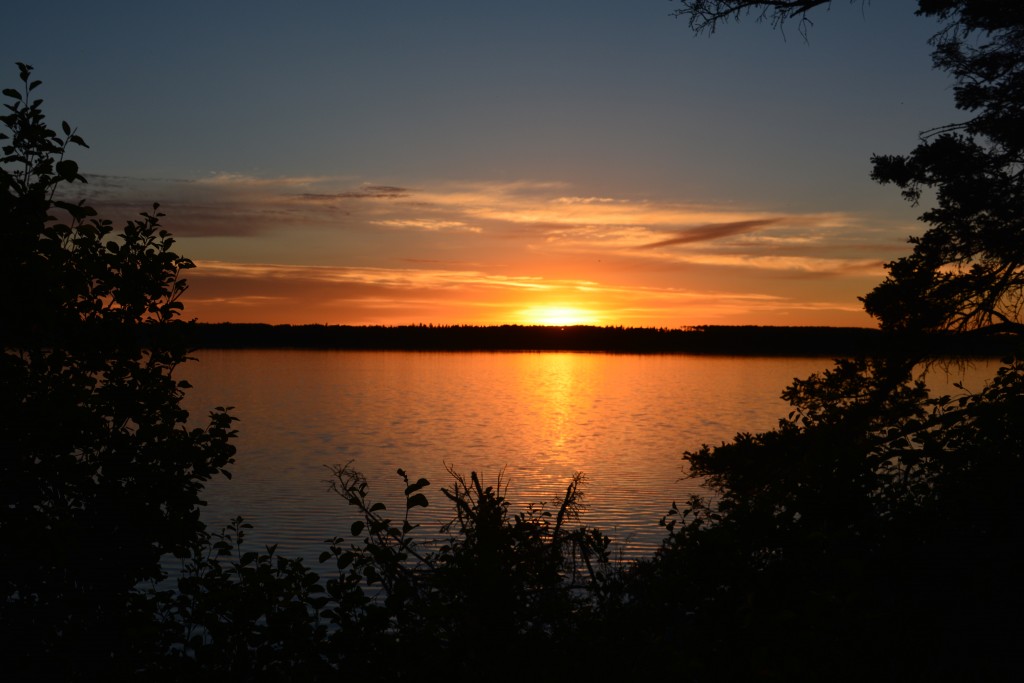
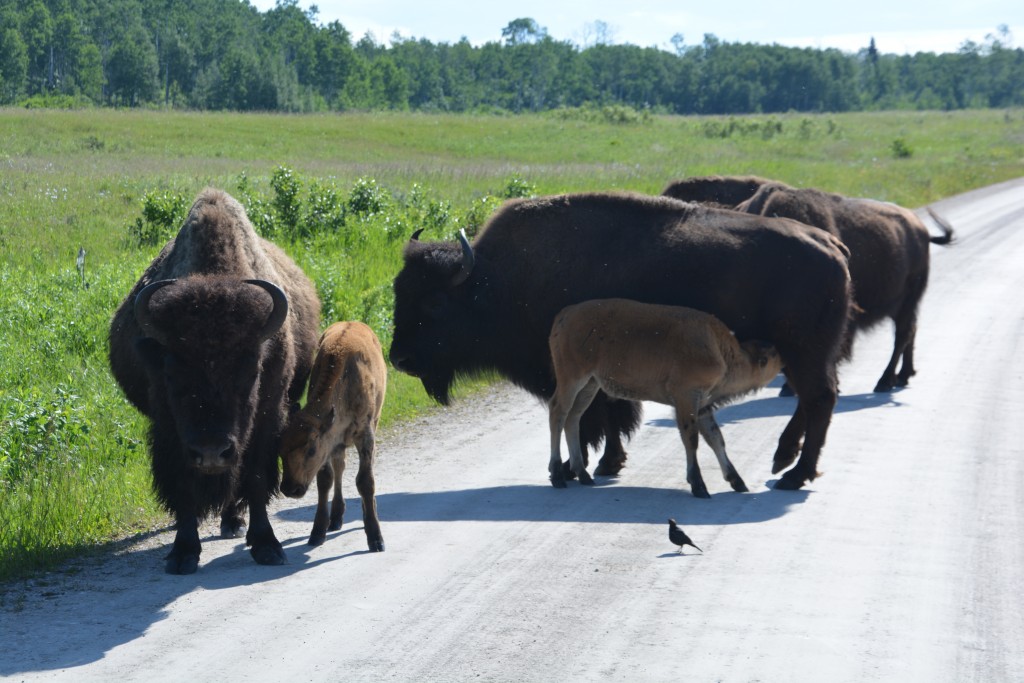
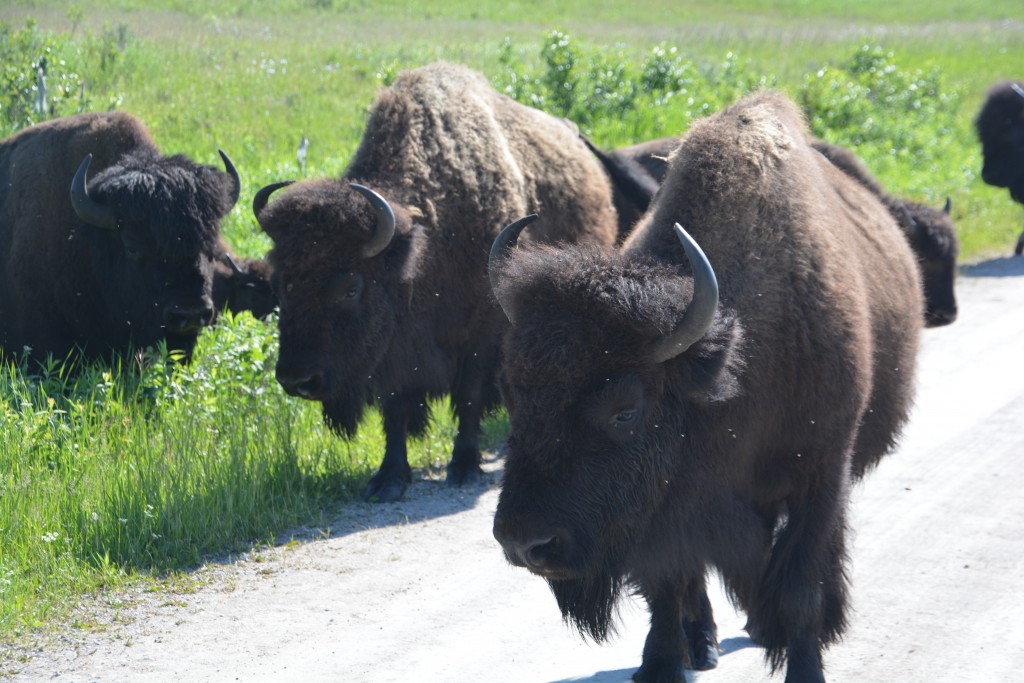
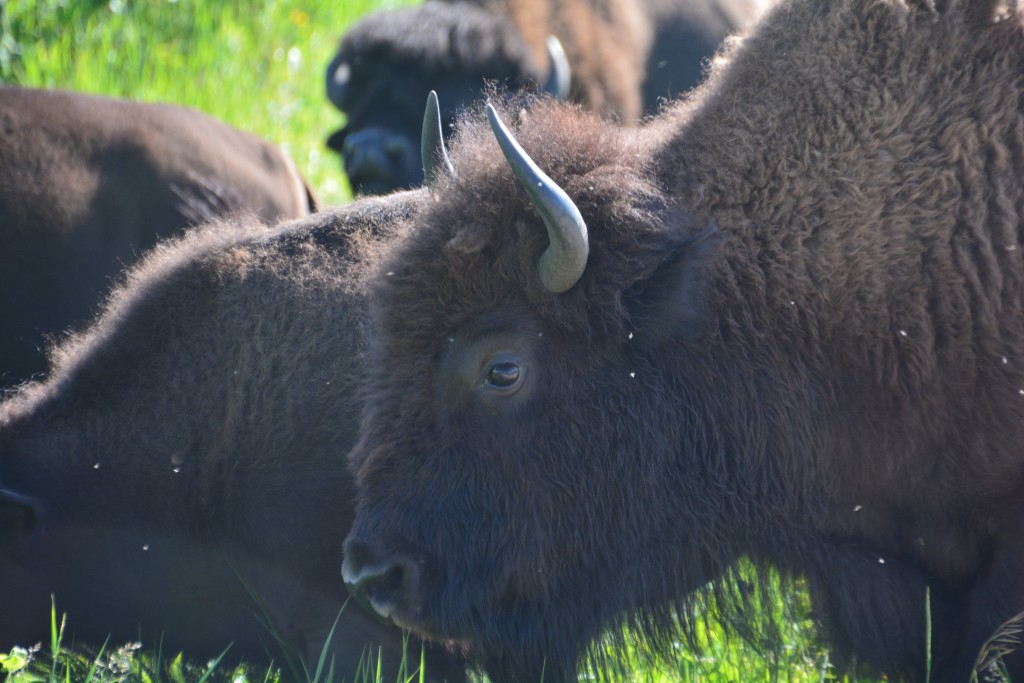
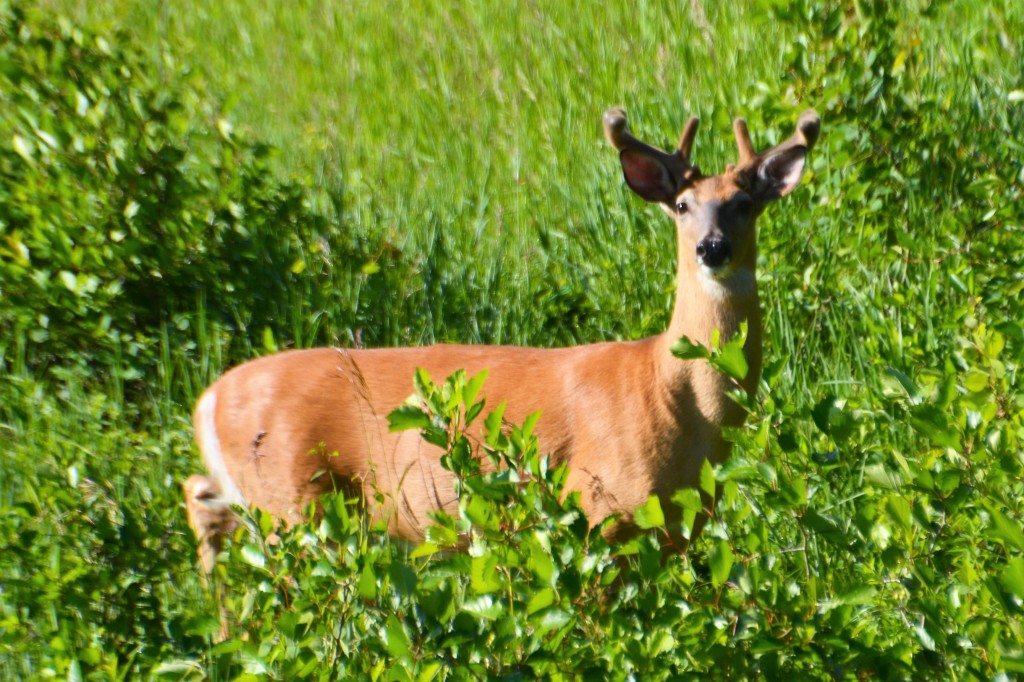
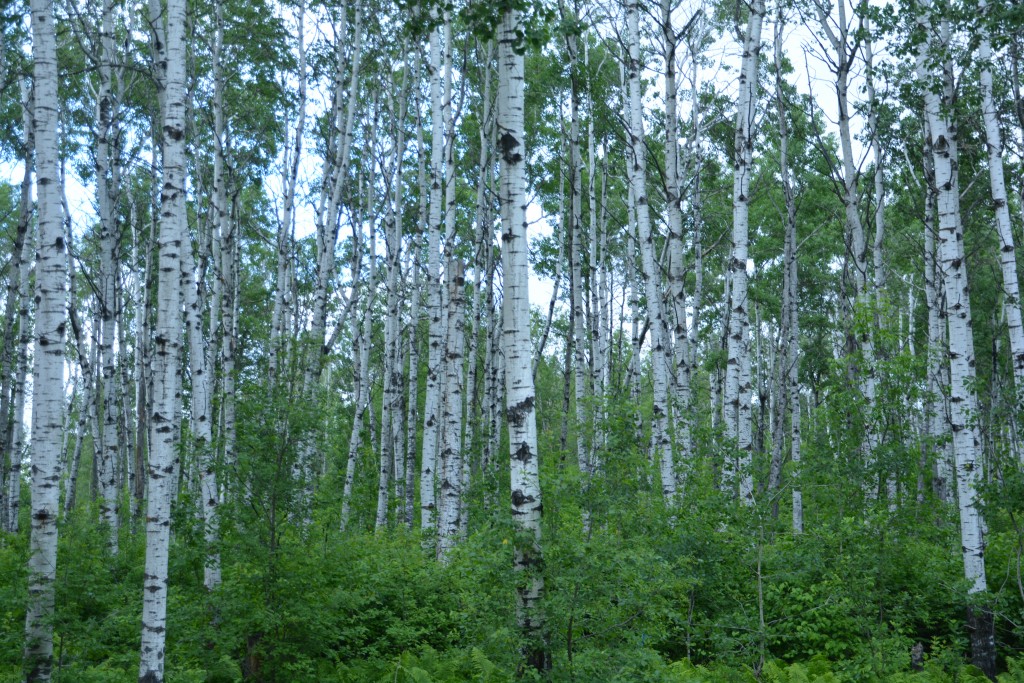
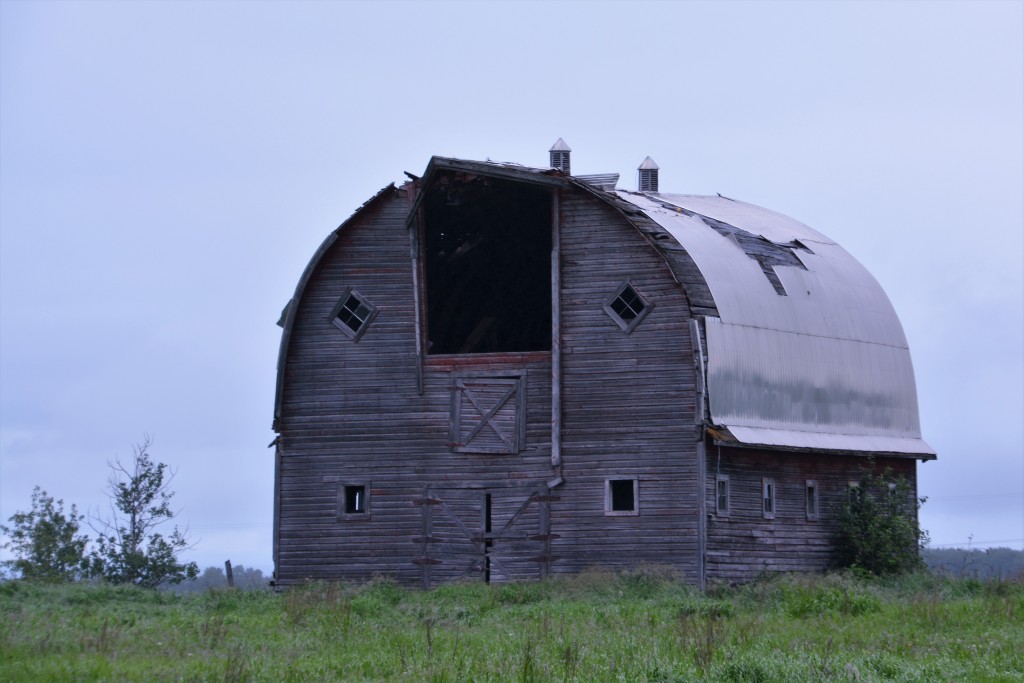
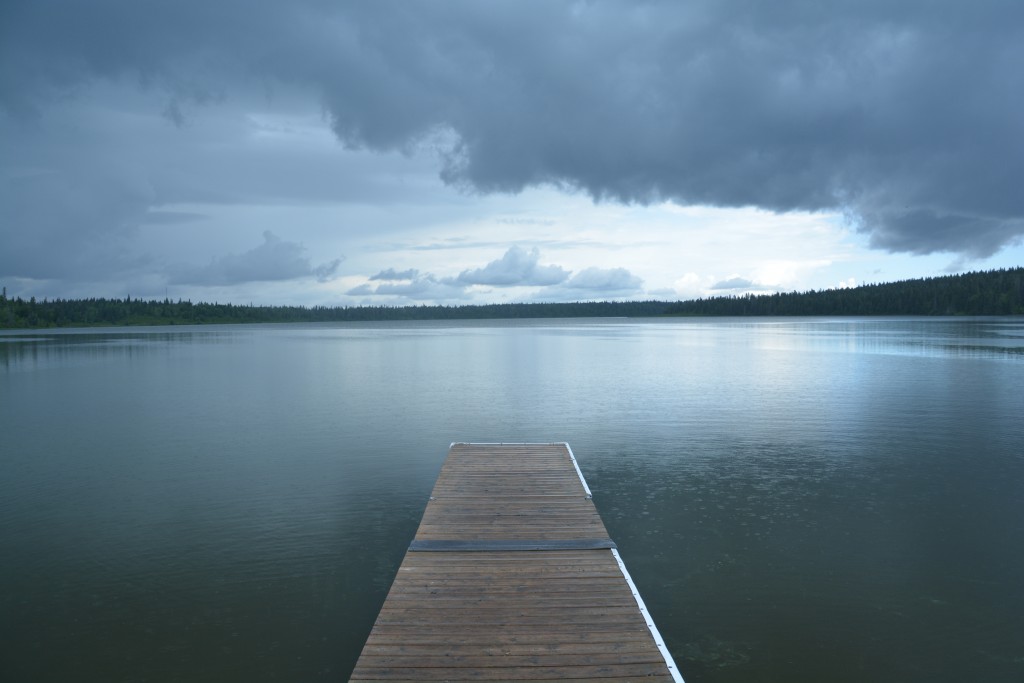
Hi Bill and Julie. Where are you heading next.
Hi Dave, wow – thanks for the mails, I’m sorry we couldn’t catch up. We loved the campsite at Devon on the banks of the river – what a beautiful spot! Between our visits there we actually flew to Nevada (!) to attend a family wedding (blog entry still to come) and then came back before heading north. We just crossed into Northwest Territories and are taking a circuitous route to Alaska. Maybe some day our paths will cross but thanks for saying hello!